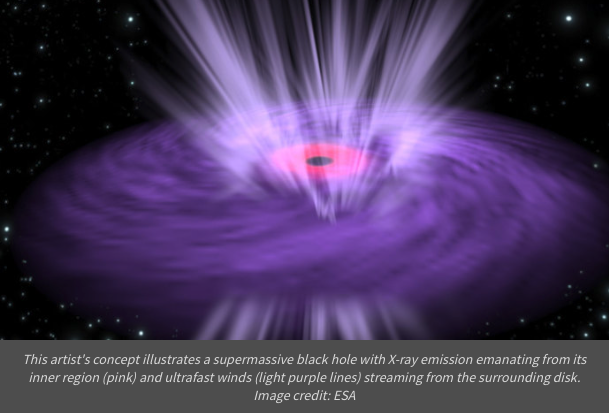
Using NuSTAR and ESA’s XMM-Newton telescope, astrophysicists observed, for the first time, winds from a nearby black hole to change temperatures rapidly.
A team of astronomers wanted to study the temperatures of these winds and for that purpose they studied X-rays, emitted from the black hole’s edge, as they were passing through the winds. During this process, elements in the winds, for example iron and magnesium, absorb some wavelengths of light in the X-ray spectrum, and create holes known as “absorption features”. These features reveal information about the winds.
Analysing the data the team of astronomers, noticed that some of the aforementioned features were disappearing and then reappearing within a few hours. Scientists concluded that the X-rays were heating up the winds up to the point that they became incapable of absorbing any more X-rays. Then, when the winds cool off the phenomenon repeated itself.
Supermassive black holes interact with their host galaxies and co-evolve with them. Studying the nature and properties of black hole winds is essential to understand how black holes affect their environment, since winds may be the means of this interplay.
Publication: Parker et al. 2017
Source: Space.com
